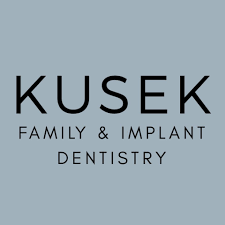Dr. McGlennen: Thank you for your continued support of our testing services. You have been a legacy provider since early 2011. Tell me how you use OralDNA® salivary diagnostics.
Edward Kusek DDS: Most of my testing consists of MyPerioID® IL-6 to pre-determine if patients have a susceptibility to periodontal disease and may be at higher risk for implant placement. In the past, MyPerioPath® provided an objective measure to aid in a study I was conducting for the use of laser detoxication of the sulcus. Here is a specific case where testing made a difference. The patient had only 5mm pockets, no bone loss, and no calculus seen on radiographs. The insurance company rejected the request to do the scaling and root planing. I ordered MyPerioPath® to show how the bacteria would change on treating different stages. We re-submitted the MyPerioPath® results, which showed high levels of invasive bacteria, to the insurance company. After a period, the insurance company reviewed the lab report and changed their decision on coverage.
Dr. McGlennen: What are the top two things to consider when you select a patient for testing?
Edward Kusek DDS: First, periodontal patients need to be tested to be able to monitor progress and to distinguish the severity of the case. Second, implant cases are tested with MyPerioID® IL-6, since peri-implantitis occurs in anywhere between 15-30% of cases. For dental/medical/legal documentation purposes, we need to note cases that have a predisposition to periodontal disease which could lead to implant failure.
Dr. McGlennen: You are a strong proponent of MyPerioID® IL-6. What are the biggest benefits of utilizing this salivary diagnostic test for your patient care?
Edward Kusek DDS: Dental/medical/legal documentation. Also, with the MyPerioID® IL-6 test results in the patient’s hand, it becomes real for the patient. It is proof to patients who need to be cautious, and proof for insurance companies which patients are in need of treatment.
Dr. McGlennen: If a new OralDNA® provider were to ask you for advice, what would be your best tip?
Edward Kusek DDS: Do not let the cost affect your decision. Look at the science behind these tests and utilize it as a tool for diagnosis. It is easy and predictable.
Dr. McGlennen: Where do you see salivary diagnostics in 3-5 years? 10 years? What would be the impact on your practice/patients?
Edward Kusek DDS: Most recently we have incorporated the OraRisk® COVID-19 RT-PCR test. Currently we are using it to determine if individuals have COVID-19 prior to procedures. We are getting the results within 1-2 business days. I have also tested our entire staff to document we are negative and decrease the fears of patients, and in case someone gets exposed we have a test that is quick to determine if they are positive or negative. Who knows what we can diagnose from saliva in the future? This is a great tool for dentistry and our patients!
For more information on how to become an OralDNA Provider – scan HERE: 
- Interview with Dr. Kusek DDS - July 31, 2020

